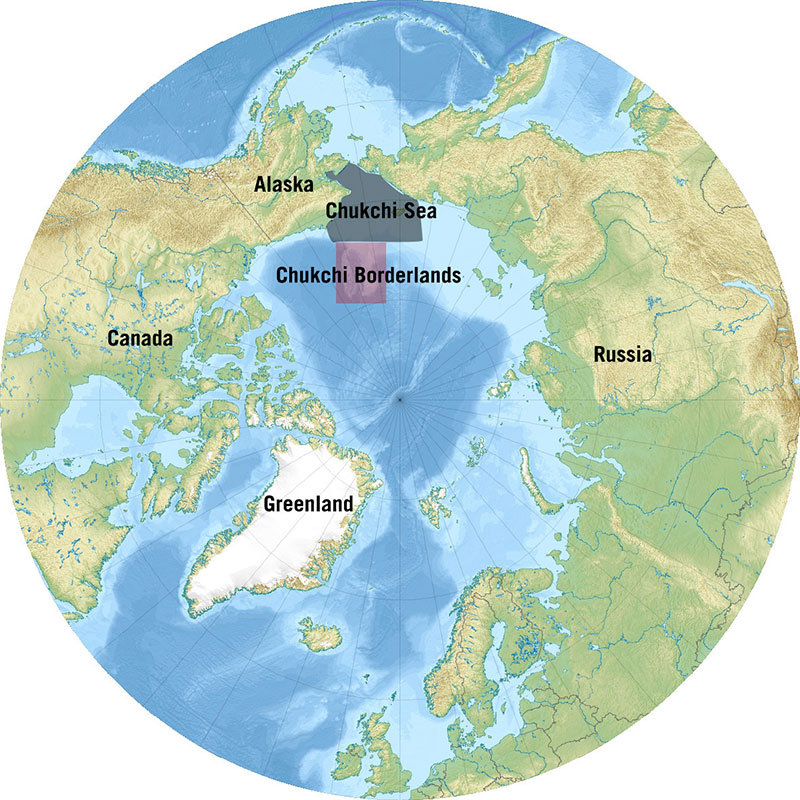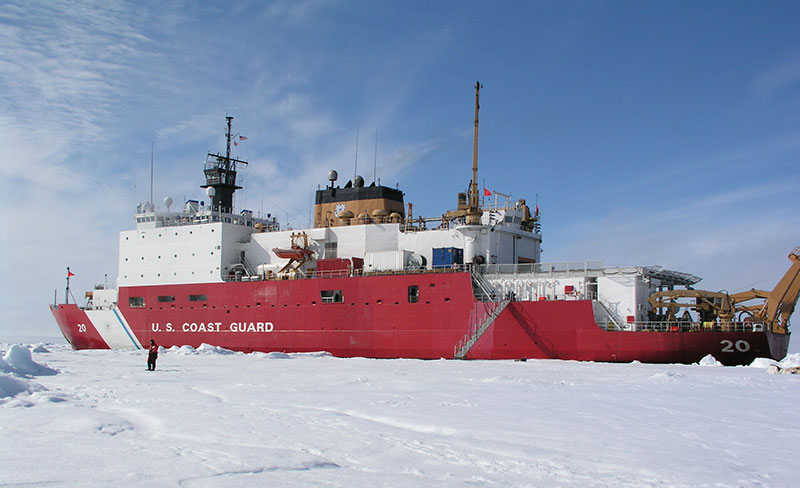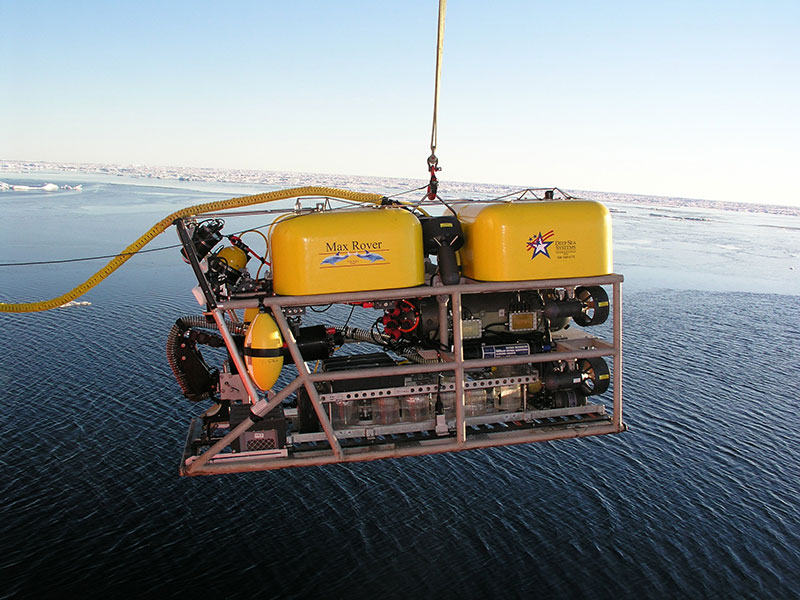
by Katrin Iken, Professor in Marine Biology, School of Fisheries and Ocean Sciences, University of Alaska Fairbanks
Russ Hopcroft, Professor, Institute of Marine Science, University of Alaska Fairbanks
July 2 - August 10, 2016

This map of the Arctic Ocean highlights both the Chukchi Sea and the study region for this expedition, the Chukchi Borderlands. Image courtesy of Wikipedia, edited by Caitlin Bailey. Download larger version (598 KB).
The Arctic Ocean is one of the most remote locations on Earth that is strongly impacted by climate change. The Chukchi Borderlands, the focus region of this NOAA Ocean Exploration mission, is one of the Arctic areas that have undergone the most dramatic summer sea ice meltdown in the last two decades. In the Chukchi Borderlands region, water masses from the Arctic, Pacific, and Atlantic oceans meet and interact over tremendously complex bottom topography, creating intricate currents and sea ice drifts. However, the biological communities that occupy the Chukchi Borderland region are poorly known, and it is therefore difficult to predict how environmental changes will influence the marine life in this important Arctic region.
From July 2 – August 10, 2016, an international and multi-disciplinary team of scientists, media personnel, and educators will sail to the Chukchi Borderlands onboard the U.S. Coast Guard Cutter (USCG) Healy. This NOAA Ocean Exploration mission will employ an ecosystem perspective to investigate microbial communities in sea ice, water, and seafloor environments; water column (planktonic) organisms; invertebrate and fish seafloor (benthic) communities; as well as conduct observations of marine mammals and seabirds. This work will help us understand the diversity of marine life in this region of change. Work from the mission is expected to improve distribution records of many species in this underexplored region, and there is a high chance of discovering a number of new, undescribed species.

The USCGC Healy was commissioned in 2000 to conduct research in ice-covered waters of the Arctic. Image courtesy of Katrin Iken, University of Alaska Fairbanks. Download larger version (1.1 MB).
This expedition will be conducted onboard the USCGC Healy. The Healy was commissioned in 2000 and is designed to break four feet of ice continuously at three knots and can operate at temperatures as low as -50 degrees F.
A variety of tools will be used to explore the region, including traditional ice cores, nets, and grabs to collect sea ice, pelagic organisms, and benthic organisms as well as standardized observation methods to record seabirds and marine mammals. This will be coupled with innovative observations using ultra-high-resolution imagery from a remotely operated vehicle (ROV) that will be used to observe organisms and their behaviors in their natural habitats; the ROV also has sampling capacity to collect some of the observed organisms. Species identifications and descriptions will be done using classical methods based on body characteristics, but also employing state-of-the-art molecular tools that identify species based on their genetic make-up.
Mapping data collected in the Arctic for the U.S. Extended Continental Shelf Project were instrumental in setting the targets for this expedition.

The ROV is lowered into the Arctic waters during NOAA’s 2005 The Hidden Ocean expedition. Image courtesy of Katrin Iken, University of Alaska Fairbanks. Download larger version (1.2 MB).
Media specialists from Ocean Geographic Magazine and Montrose Productions will help capture and document the exciting findings during the research cruise. Additionally, there will be a Polar TREC (Teachers and Researchers Exploring and Collaborating) teacher from Broadwater Academy, Virginia joining the team to develop findings into lesson plans and make them available to K-12 student audiences. The NOAA Ocean Exploration team will be hands-on with outreach activities, so check this website regularly to follow the cruise progress and its findings!
NOAA’s partners in this mission include the University of Alaska Fairbanks, the University of Alaska Anchorage, The University of Washington, the University of Connecticut, the Japan Agency for Marine-Earth Science and Technology (JAMSTEC), Kitazato University (Japan), Hokudai University (Japan), The Arctic University of Norway, The Global Foundation for Ocean Exploration, Oceaneering International, The US Fish & Wildlife Service, Ocean Geographic Magazine, Calypso Productions, Montrose Pictures, and The Broadwater Academy (through ARCUS).